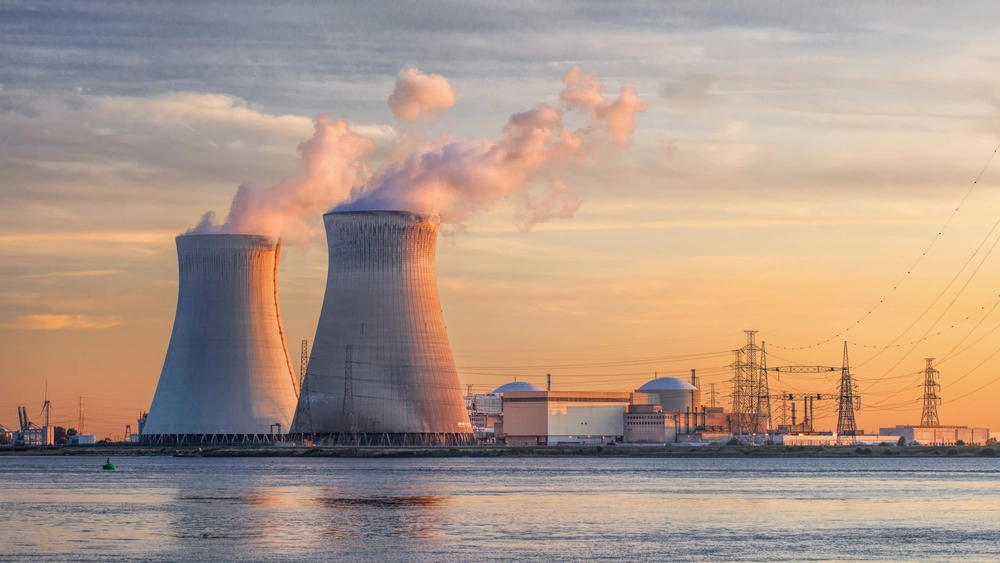
The 100,000 quadrillion dollar asteroid: space mining part one

By John Catchpole, Halo Garrity
22 Nov 2023 | 4 minute read
In the first of two articles, we explore the topic of space mining.
The Psyche mission
On October 13 2023, NASA successfully launched the Psyche mission to a metal-rich asteroid orbiting the sun between Mars and Jupiter. A spacecraft has been sent to investigate the M-type asteroid named 16 Psyche (Psyche) which it is hoped comprises of the exposed nickel-iron core of an early protoplanet.
The scientific goal of the mission is to understand iron cores, and by doing so, understand more about our own planet and others that have iron cores as their foundational building block. Earth's metallic core is unreachable for us to see or measure, so Psyche potentially offers a unique window into the violent history of collisions and accretion that created terrestrial planets.
Spectroscopy (one of the ways scientists use to determine the composition of celestial objects) can tell us that Psyche is metallic (hence M-type) but not which specific metals make up its composition. Nickel and iron are common in asteroids and simulations based on Psyche's impact craters suggest it may also have large quantities of Monel, a metal made mainly of nickel and copper. We won't know Psyche's exact composition until the spacecraft arrives in 2029.
Financial value
Whichever metals Psyche is comprised of their values on Earth would truly be astronomical. The amount of metal multiplied by the current market values of those metals produces staggering numbers, with estimates of worth as high as $100,000 quadrillion.
NASA has no plans to mine Psyche and the spacecraft sent has no commercial mining abilities. Given the distance between Earth and Psyche the cost of bringing the metals back to Earth would also likely negate their value. Asteroid mining however is not pure science fiction.
Asteroid and space mining
In 2015 the astrophysicist Neil deGrasse Tyson opined that "the first trillionaire there will ever be is the person who exploits the natural resources on asteroids". No company has yet been successful in commercially mining materials in space, but plans are in place for the attempt.
AstroForge was founded in January 2022 with the aim of becoming the first viable asteroid mining company. The company raised $13million in seed funding and is concentrating on finding and extracting platinum-group metals (PGMs) that are in high demand on Earth.
In the national realm, NASA's Artemis Program seeks to return humans to the Moon, then Mars and beyond with commercial and international partners. That will involve mining and utilising celestial bodies and the Moon's natural resources. (NASA terms this "in-situ resource utilisation", or "ISRU" rather than mining.) For instance, asteroids that are mainly clay contain water – that water could be used to manufacture rocket fuel.
The concept of asteroid mining has been explored before. In 2012, for example, the company Planetary Resources Inc launched with the plan to mine near-Earth asteroids for PGMs and water. Luxembourg directly invested 12m Euros with another 13m Euros being delivered from the public investment bank SBCI. The plans for a new "gold rush" in the stars were ultimately unsuccessful and the company was acquired in 2018 by ConsenSys, a blockchain technology company.
The growth of plans to create in-orbit manufacturing capabilities raise the possibility of space resources being collected and brought into orbit for processing, without the need to bring raw materials down to Earth. Whether the space resources are used in-situ, in-orbit, or brought back to Earth interesting legal questions of ownership arise.
Original legal and regulatory framework
Until recently space law was mainly comprised of United Nations treaties created against the backdrop of the Cold War.
The 1967 Outer Space Treaty enshrined the principle of non-appropriation in Article 2:
"Outer space, including the Moon and other celestial bodies, is not subject to national appropriation by claim of sovereignty, by means of use or occupation, or by any other means."
Asteroids, being celestial bodies, were therefore not to be appropriated for use, including mining. Of note is that the Outer Space Treaty prohibits national appropriation but is silent on private appropriation.
The Moon Agreement of 1979 went further, with Article 11 stating that the Moon and its natural resources are the common heritage of mankind. Paragraph 3 explicitly sets out that neither the surface, nor the subsurface of the Moon or any of its natural resources shall become property of any State, organisation, or person. In other words, a prohibition on commercial mining and private appropriation in addition to the existing prohibition on national appropriation.
Paragraph 7 also mandates the "equitable sharing" of all the benefits that may be derived from lunar resources, not just between the countries that have developed them, but between all the countries that have contributed either directly or indirectly to the exploration of the Moon, and the developing countries.
The basic legal framework these treaties provided therefore did not allow for the private appropriation and use of space resources. The treaties have not been signed by every nation, or even by every spacefaring nation. The US for example has signed the Outer Space Treaty but not the Moon Agreement.
Our advice
With the abundant resources available in space governments have not stood still and resigned themselves to the prohibitions on ownership. Instead, individual countries have started passing their own legislation to facilitate private appropriation and commercial exploitation of space. Making the right decision about where to base a space resource company is vital. In the next article details of the legal regimes available for future space miners are explored and opportunities considered.












